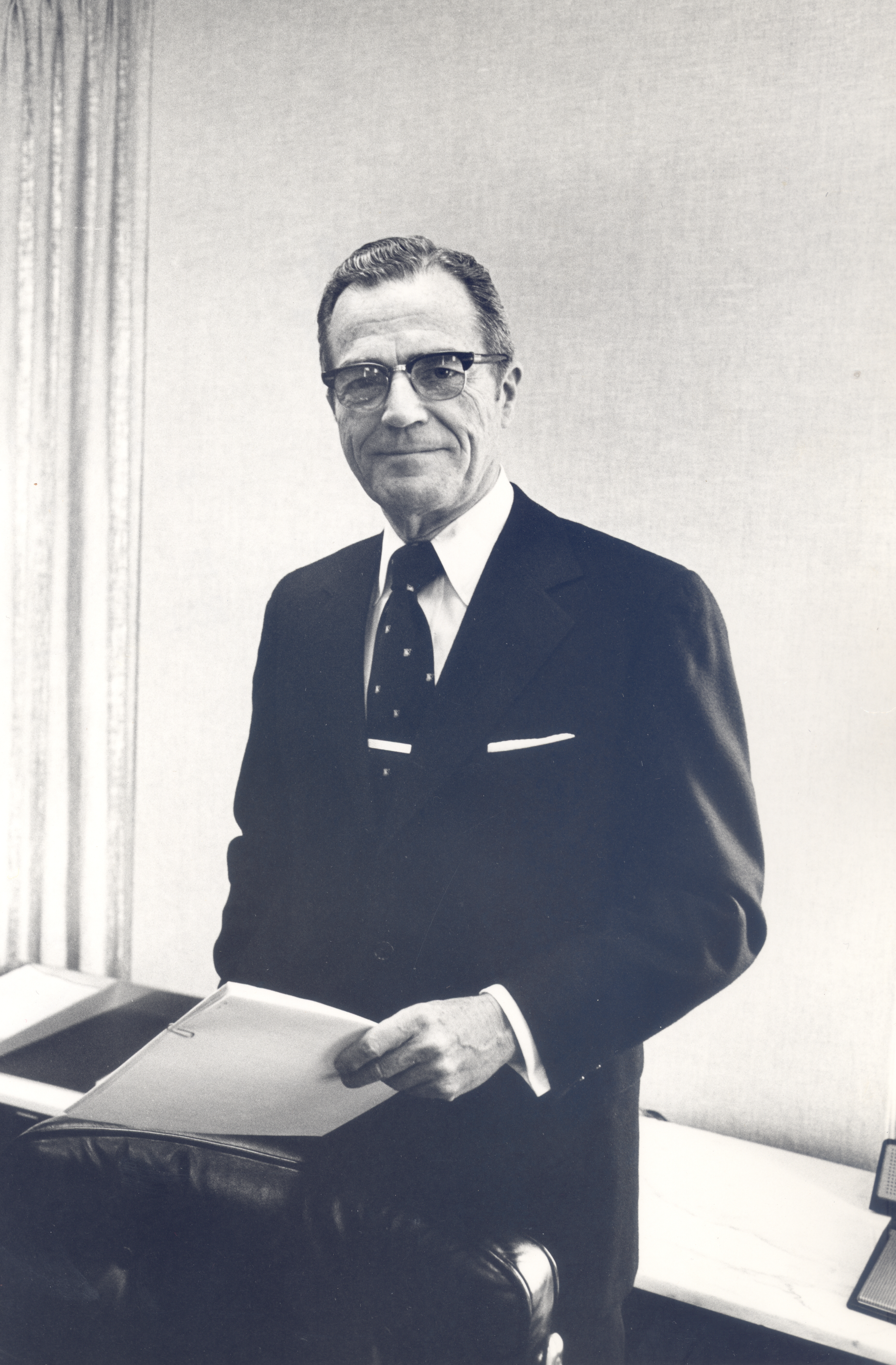Howard Sinclair Turner recently passed away after a short illness at Bryn Mawr Hospital at the age of 100. He was the last member of the founding Turner family to take the helm of the Turner Construction Co., one of the largest international construction management companies.
Turner Construction was founded in 1902 by Howard Turner’s uncle, Henry Chandlee Turner and quickly found its niche in the construction industry using the new material of reinforced concrete.
Born in Jenkintown, Pennsylvania in 1911, Howard Turner was the second of three sons of J. Archer Turner, Jr, who was President of the Turner Construction from 1941 to 1946. Howard graduated from Swarthmore College in 1933 and was subsequently elected an honorary member of Phi Beta Kappa. He completed a doctorate in organic chemistry and chemical engineering in 1936 from the Massachusetts Institute of Technology (MIT). He married Katharine (Kay) Swett, whom he met on a blind date, and they remained married until her death in 2003.
After graduating from MIT, Turner worked as a research chemist with the DuPont Corp. where he worked on novel uses, including for parachutes and food packaging, of a new synthetic material – nylon. He then joined Pittsburgh Consolidation Coal Co. in 1946 to lead their new research and development division. In 1954, Turner joined Jones & Laughlin Steel Co. as the vice president of research and development.
Turner joined the Board of Directors of Turner Construction in 1952. In 1965, he was selected to serve as President of Turner Construction. He served as President and Chief Executive Officer from 1968 to 1971. Turner served as Chairman of the Board from 1971 to 1978. From 1978 to 1982, he served as Chairman of the Executive Committee.
Under his leadership, the company grew from seven offices in the U.S. to operations in 20 cities; the company’s community affairs program was formalized and the Turner School of Construction Management for minorities and women was established; and the company’s international division was launched with operations in four countries. The company's sales grew from $591 million in 1965 to $1.7 billion by 1978.
Turner was also very active outside his responsibilities as the leader at Turner Construction. He served as a director of GAF, Teacher’s Insurance and Annuity Assoc., Ingersoll Rand, ASARCO, Dime Savings Bank of New York, and Jones and Laughlin. He was a trustee of the Wistar Research Institute, Swarthmore College, Rockefeller Institute, and Washington College. At the request of various administrations, he was a member of technical advisory committees for the Department of Commerce and the Post Office. Of note, he served on President Nixon’s Science Advisory Committee until it was dissolved when the members disagreed with the President in testimony before Congress. In 1966, he traveled with a delegation to Vietnam to develop a report on developing health, education, agriculture by President Johnson. He was elected to membership of the National Academy of Engineering in 1983, one of the proudest achievements of his remarkable career. Always quite humble about his scientific abilities, Turner’s view was that his greatest contribution was the ability to connect research with application.
Through the years of his marriage to Kay, they were inveterate travelers to Europe, Asia, Central and South America, and Australia. At the age of 82, he traveled to the North Pole on a nuclear-powered Russian ice breaker. He is survived by his three daughters, Susan Turner, a social worker of Boston, Holly Turner, a lawyer, (Don Carmichael) of Edmonton, Canada and Barbara Jean Turner, a physician-researcher, (Francisco Gonzalez-Scarano) of San Antonio, formerly of Wallingford and a Professor at the University of Pennsylvania, as well as seven grandchildren and four great grandchildren.
A Memorial Service after the manner of Friends will be held on Saturday, May 5th at noon at the Swarthmore Meeting House with a reception to follow. Donations in lieu of flowers can be made to the American Friends Service Committee or the Carter Center. BD+C
Related Stories
| Feb 1, 2012
New ways to work with wood
New products like cross-laminated timber are spurring interest in wood as a structural material.
| Feb 1, 2012
Blackney Hayes designs school for students with learning differences
The 63,500 sf building allows AIM to consolidate its previous two locations under one roof, with room to expand in the future.
| Feb 1, 2012
Two new research buildings dedicated at the University of South Carolina
The two buildings add 208,000 square feet of collaborative research space to the campus.
| Feb 1, 2012
List of Top 10 States for LEED Green Buildings released?
USGBC releases list of top U.S. states for LEED-certified projects in 2011.
| Feb 1, 2012
ULI and Greenprint Foundation create ULI Greenprint Center for Building Performance
Member-to-member information exchange measures energy use, carbon footprint of commercial portfolios.
| Feb 1, 2012
AEC mergers and acquisitions up in 2011, expected to surge in 2012
Morrissey Goodale tracked 171 domestic M&A deals, representing a 12.5% increase over 2010 and a return to levels not seen since 2007.
| Jan 31, 2012
AIA CONTINUING EDUCATION: Reroofing primer, in-depth advice from the experts
Earn 1.0 AIA/CES learning units by studying this article and successfully completing the online exam.
| Jan 31, 2012
28th Annual Reconstruction Awards: Modern day reconstruction plays out
A savvy Building Team reconstructs a Boston landmark into a multiuse masterpiece for Suffolk University.
| Jan 31, 2012
Chapman Construction/Design: ‘Sustainability is part of everything we do’
Chapman Construction/Design builds a working culture around sustainability—for its clients, and for its employees.
| Jan 31, 2012
Fusion Facilities: 8 reasons to consolidate multiple functions under one roof
‘Fusing’ multiple functions into a single building can make it greater than the sum of its parts. The first in a series on the design and construction of university facilities.

















